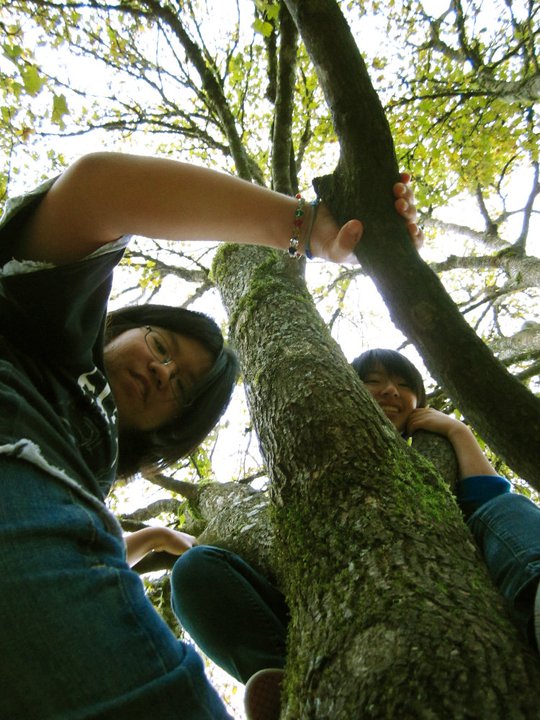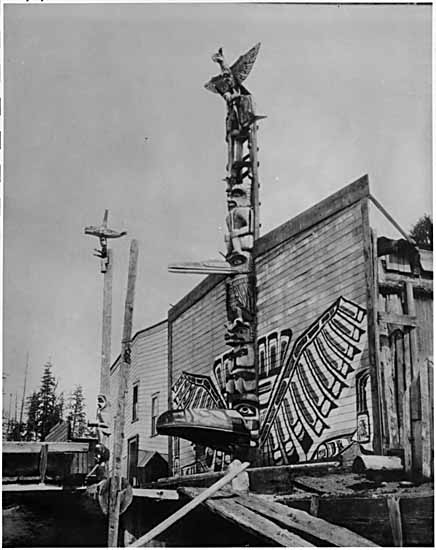Write a blog that hyper-links your research on the characters in GGRW according to the pages assigned to you. Be sure to make use of Jane Flick’s reference guide on your reading list. (Paterson)
Summary of my section
(In my edition, pp.217-229)
This is the part of the novel when all the characters are relaxing at night and watching westerns (in the case of Eli, reading one). Charlie recognizes his father as one of the actors in one of the westerns. The four old Indians also make an appearance in the western, as this is the one they “fixed” (King 223). The section ends with the ending of another creation story, where Changing Woman—who introduces herself to her arrestors as Ishmael—leaves the whale (Moby-Jane) she’s been riding on and gets arrested by soldiers and dragged to Fort Marion again.
Allusions
Cowboy vs. Indians western with John Wayne
John Wayne is an actor of many anti-Indian westerns and his films have been picked by Indians (Flick 147). According to Snopes.com, Wayne has been quoted by Playboy magazine saying that he feels the colonial takeover of land from Indians by whites was justified, and that current generations of white Americans don’t owe current generations of Indians anything. In another biographical summary of John Wayne, the actor is an insecure version of his on-stage persona who had his own personal, financial, and career problems; while a chaser of women, a Republican supporter, and a macho-man, Wayne was also pre-occupied with showering his family with gifts and even showed an interest in collecting “native American kachina dolls.”
In this way, Wayne echoes aspects of Charlie’s and Lionel’s personalities: a struggle with women (according to the biography, Wayne had several failed relationships), struggles with career, and clashes between career and belief. Wayne adamantly held to roles that were in line with his beliefs until his Oscar-winning performance in the 1969 version of True Grit.
Flick also suggests that Lionel’s desire for Wayne’s jacket suggests Lionel’s “denial of ‘Indianness'” (147). Flick also points out that Morningstar also wears a parallel wardrobe, Custer’s wardrobe (147).
Portland’s nose also makes an appearance, and his need to wear makeup is because he doesn’t fit the stereotype of an Indian’s nose (Flick 153). Ironically, he is an Indian himself.
Moby-Jane and Ishmael/Changing Woman creation story
Changing Woman is a character from Navajo lore that brings humanity into the current “fifth world” from the previous four worlds (Flick 152). Flick also asks us to consider one of these “changes” of Changing Woman as a hinted lesbian relationship with the female character Moby Jane. Moby Jane is also King’s contrasting challenge to Melville’s patriarchal world (Flick 158).
Changing Woman is of particular interest to our story of transformation and change as she is closely related to the Medicine Wheel in Native American legends: “[s]he represents the cyclical path of the Seasons, Birth (Spring), Maturing (Summer), Growing old (Fall), and Dying (Winter), only to be reborn again in the Spring (“Native American Legends”). An academic article cites Gary Witherspoon as calling male characters in Navajo legends “static reality” while female characters are “active reality” (Rissetto).
Ishmael is also of particular interest. In addition to being a character of famous lines in Moby Dick (Flick 143), Ishmael is an interesting Biblical character of the Judeo-Christian faiths. He is the first—though illegitimate—son of Abraham and, despite his bastard status, becomes an important and influential Biblical figure that is blessed by God (Zavada). A rise from lowliness to importance is another theme in King’s novel: Eli and Charlie beat Native stereotypes of unemployment by becoming hotshot lawyers, same as Alberta, despite her abusive childhood, and Portland has an interesting journey becoming successful, failing, and getting back in the scene again.
What parallels can you find based on these allusions?
Work cited
Flick Jane. “Reading Notes for Thomas King’s Green Grass, Running Water.” Canadian Literature 161/162 (1999). Web. 4 Apr. 2013. (original citation off Paterson’s website—I think this version has been stored in our blogosphere?)
King, Thomas. Green Grass Running Water. Toronto: Harper Perennial, 2007. Print.
“Native American Legends: Changing Woman—A Navajo Legend.” First People of America and Canada—Turtle Island. First People, n.d. Web. 7 July 2015.
Paterson, Erika. “Lesson 3:3.” ENGL 470A Canadian Studies Canadian Literary Genres May 2015. University of British Columbia Department of English, n.d. Web. 7 July 2015.
Rissetto, Adriana C. “Changing Woman: Myth, Metaphor, and Pragmatics.” Between Four Sacred Mountains. University of Virginia, n.d. Web. 7 July 2015.
Sheridan, Peter. “The Mn behind the Tough-talking Persona: New Biography Reveals the Real John Wayne.” Express [London] 11 Apr. 2014: 38-39. Northern and Shell Media Publication, 11 Apr. 2014. Web. 7 July 2015.
“Wayne’s World.” Urban Legends Reference Pages. Snopes.com, 2 May 2015. Web. 7 July 2015.
Zavada, Jack. “Ishmael—First Son of Abraham.” About: Religion. About.com, n.d. Web. 7 July 2015.



